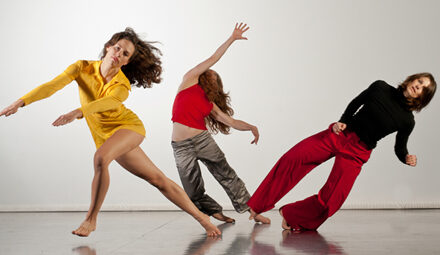The estimable Duke Symphony Orchestra offered its final concert of the season in Baldwin Auditorium, on the East Campus. The orchestra has probably never sounded better, although admittedly this listener’s experience dates back only to the end of the Allan H. Bone era. While paying tribute to his players, recognizing the townies who help fill out its sections, and saluting the fourteen seniors who leave the program this spring, Music Director and Conductor Harry Davidson said he thought it the best student orchestra he’s heard at Duke during his eleven-year tenure. In fact, he’s pulled very special rabbits out of magical musical hats all along, building and training and polishing his crew from year to year, dealing annually with departures of experienced players and the challenge of bringing new ones into the fold and getting them up to speed quickly. This is one of the things to which Davidson alluded when he spoke of the beginnings and endings that recur with each academic year, adding that it’s one of the facts of college and university life that he’s found particularly appealing throughout his professional career.
As an old Navy pal once said while driving a ship through a storm, Davidson was clearly maneuvering with difficulty, having had a too-close encounter with a child’s toy that was in the wrong place, in his path. He stood for the entire concert, but he made his way on and off the stage with deliberate speed (another Navy term), and he got onto and off of the podium gingerly. None of this seemed to have any particular impact on his leadership, which was as vibrant and incisive as most of the playing during a substantial program of mostly German meat and potatoes.
Things got underway with Brahms’ “Academic Festival Overture,” one of two concert overtures by this great master (the other being the “Tragic Overture”). It seems strange that the AFO, to use its short title, isn’t played more often on college campuses, given Brahms’ quotation of the famous “Rakóczy March” and inclusion of four old college tunes in the course of the work. The tunes – drinking songs, basically – are “Wir hatten gebauet ein stattliches Haus,” “Der Landesvater,” “Fuchslied” (“Was komm dort von der Höh’”), and “Gaudeamus igitur,” on which the radiant finale is based.
The performance was a bit rambunctious – certainly an appropriate way to reveal the work’s many delights – and the playing was mostly rock-solid.
There followed the first movement of Victor Herbert’s Cello Concerto No. 2, featuring soloist Brian Sung, the Duke SO’s principal cellist and a student – for a few more weeks – of Fred Raimi, of the Ciompi Quartet. This concerto is one of the hidden gems of the repertoire, a beautiful and important score in its own right and one that in turn influenced Dvorák’s second cello concerto. We tend not to take the memory of Herbert – of Babes in Toyland fame – very seriously, but he was a German-trained composer and cellist (of Irish birth) of considerable merit, as this cello concerto demonstrates. Raimi claimed he had little to do with Sung’s accomplishment, aside from helping him maintain the work, which he’d learned in high school and kept under his fingers ever since. Sung captured the slot on this program by winning Duke’s 2009-10 concerto competition. The reading was a triumph for him and for the orchestra, and the young artist’s many fans in the hall went appropriately nuts over the performance.
After remarks by the Maestro, the concert ended with a reading of Schumann’s Symphony No. 1, known as the “Spring” Symphony, that truly seemed to glow from within. Schumann sometimes gets a bad rap for murky writing but the key is orchestral balance, and Davidson and his musicians had the measure of this often exuberant work. At the end there was another big uproar in the form of a standing ovation, on this occasion richly deserved.
PS The program notes were by members of the orchestra, and the booklet included short bios and farewell notes by the departing seniors – a very nice touch.











